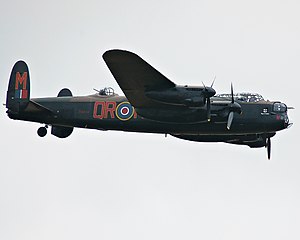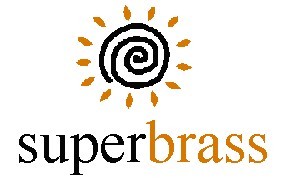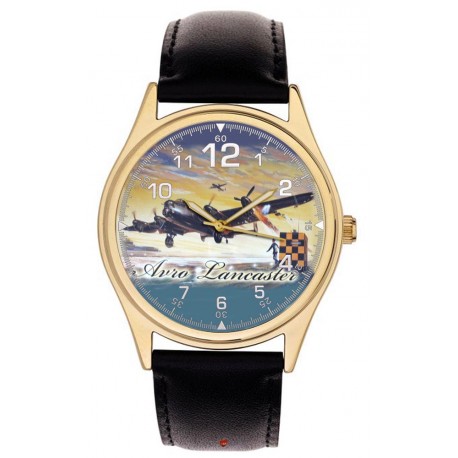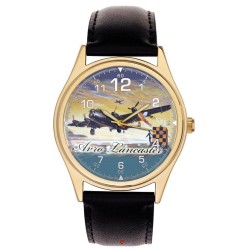No products
World War Watches
- Pocket & Wrist Watches
- Music Instruments
- Brass Band & Woodwinds
- Ethnic Indian Instruments
- Guitars, Mandolins & Strings
- Violin, Viola & Cello Fittings
- World Percussion
- Nautical Brass
- Collectible Damascened Knives
New products
-

Kamala Harris 2024 Presidential Campaign Portrait Art Watch. Solid Brass Democratic Election Collectible Americana.
large format 40 mm black solid brass casing with stainless steel back...
$ 134.48 -

Kamala Harris & Tim Walz 2024 Presidential Campaign Watch. Blues. Solid Brass Democratic Election Collectible Americana Watch.
large format 40 mm black solid brass casing with stainless steel back...
$ 126.33 -

Kamala Harris 2024 Presidential Campaign Slogan Art Watch in Colors of the Stars & Stripes. Solid Brass Democratic Election Collectible Americana. Let's Win This!
large format 40 mm black solid brass casing with stainless steel back...
$ 134.48 -

Forward! Iconic Kamala Harris 2024 Presidential Campaign Slogan Art Watch in Colors of the Stars & Stripes. Solid Brass Democratic Election Collectible Americana.
large format 40 mm black solid brass casing with stainless steel back...
$ 134.48 -

Choose Courage! Iconic Kamala Harris 2024 Campaign Art Solid Brass Watch
large format 40 mm black solid brass casing with stainless steel back...
$ 121.58
Avro Lancaster 617 Squadron Dambusters WW-II RAF Aviation Art Collectible Wrist Watch
COM-128a2l
New product
- Premium Citizen 2040 quartz movement.
- 40 mm large size heavy brass case.
- Rubberized Leather band.
- Unique Collectible Limited Edition Handmade Watches.
More info
| Lancaster | |
|---|---|
 | |
| Royal Air Force Avro Lancaster B I PA474of the Battle of Britain Memorial Flight. This aircraft carries the deepened bomb aimer's blister (Mod. 780), and the later paddle-bladed propellers. Neither H2S blister nor exhaust shrouds are fitted. | |
| Role | Heavy bomber |
| Manufacturer | Avro |
| Designer | Roy Chadwick |
| First flight | 9 January 1941 |
| Introduction | February 1942 |
| Retired | 1963 (Canada) |
| Primary users | Royal Air Force Royal Canadian Air Force Royal Australian Air Force |
| Number built | 7,377 |
| Unit cost | £45–50,000 |
| Developed from | Avro Manchester |
| Variants | Avro Lancastrian |
| Developed into | Avro York Avro Lincoln |
The Avro Lancaster is a British four-engined Second World War heavy bomber designed and built by Avro for the Royal Air Force (RAF). It first saw active service with RAF Bomber Command in 1942 and, as the strategic bombing offensiveover Europe gathered momentum, it was the central implement for the night-time bombing campaigns that followed. It became the main heavy bomber used by the RAF, the RCAF, and squadrons from other Commonwealthand European countries serving within the RAF, overshadowing its close contemporaries the Handley Page Halifax and Short Stirling.[1] The "Lanc", as it was affectionately known,[2] thus became one of the more famous and most successful of the Second World War night bombers, "delivering 608,612 long tons of bombs in 156,000 sorties."[3] The Lancaster, an evolution of the troublesomeAvro Manchester, was designed by Roy Chadwick and was powered by four Rolls-Royce Merlins, or, in one version,Bristol Hercules engines.
A long, unobstructed bomb bay meant that the Lancaster could take the largest bombs used by the RAF, including the 4,000 lb (1,800 kg), 8,000 lb (3,600 kg), and 12,000 lb (5,400 kg) blockbusters, loads often supplemented with smaller bombs or incendiaries. The versatility of the Lancaster was such that it was chosen to equip 617 Squadron and was modified to carry the Upkeep "Bouncing bomb" designed byBarnes Wallis for Operation Chastise, the attack on GermanyRuhr Valley dams. Although the Lancaster was primarily a night bomber, it excelled in many other roles, including daylight precision bombing: in the latter role some Lancasters were adapted to carry the 12,000 lb (5,400 kg) Tallboy and then the 22,000 lb (10,000 kg) Grand Slam earthquake bombs (also designed by Wallis).[4]
In 1943, a Lancaster was converted to become an engine test bed for the Metropolitan-Vickers F.2turbojet. Lancasters were later used to test other engines, including the Armstrong Siddeley Mamba andRolls-Royce Dart turboprops, and the Avro Canada Orenda and STAL Dovern turbojets. Postwar, the Lancaster was supplanted as the RAF's main strategic bomber by the Avro Lincoln, a larger version of the Lancaster. The Lancaster took on the role of long range anti-submarine patrol aircraft (later supplanted by the Avro Shackleton) and air-sea rescue. It was also used for photo-reconnaissance and aerial mapping, as a flying tanker for aerial refuelling and as the Avro Lancastrian, a long-range, high-speed, transatlantic, passenger and postal delivery airliner. In March 1946, a Lancastrian of BSAA flew the first scheduled flight from the new London Heathrow Airport.
Development
The origins of the Lancaster stem from a twin-engined bomber design submitted to meet Air Ministry Specification P.13/36, which was for a new generation of twin-engined medium bombers for "worldwide use", the engine specified as the Rolls-Royce Vulture.[6] The resulting aircraft was the Manchester, which, although a capable aircraft, was underpowered and troubled by the unreliability of the Vulture engine. Only 200 Manchesters were built, with the type withdrawn from service in 1942.[7]
Avro's chief design engineer, Roy Chadwick, was already working on an improved Manchester design using four of the more reliable but less powerful Rolls-Royce Merlin engines, in the form of Merlin "Power Plant" installations developed by Rolls-Royce for the Beaufighter II,[8] installed on a larger wing. At first the aircraft was called Avro Type 683 Manchester III and later renamed the Lancaster. The prototype aircraft BT308 was assembled by the Avro experimental flight department at Ringway Airport,Manchester. Test pilot H. A. "Bill" Thorn took the controls for its first flight at Ringway, on Thursday, 9 January 1941. The aircraft proved to be a great improvement on its predecessor, being "one of the few warplanes in history to be 'right' from the start."[9] Its initial three-finned tail layout, a result of the design being adapted from the Manchester I, was quickly changed on the second prototype DG595 and subsequent production aircraft, to the familiar twin-finned specification also used on the later Manchesters.[citation needed]
Some of the later orders for Manchesters were changed in favour of Lancasters; the designs were very similar and both featured the same distinctive greenhouse cockpit, turret nose and twin tail. The Lancaster discarded the stubby central third tail fin of the early Manchesters and used the wider spantailplane and larger elliptical twin fins from the later Manchester IA.[citation needed]
The majority of Lancasters built during the war years were manufactured by Avro at their factory at Chadderton near Oldham,Greater Manchester and test flown from Woodford Aerodrome inCheshire. Other Lancasters were built by Metropolitan-Vickers (1,080, also tested at Woodford) and Armstrong Whitworth. It was also produced at the Austin Motor Company works in Longbridge,Birmingham, later in the Second World War and postwar by Vickers-Armstrongs at Chester as well as at the Vickers Armstrong factory, Castle Bromwich, Birmingham. Only 300 of the Lancaster B II fitted with Bristol Hercules engines were constructed; this was a stopgap modification caused by a shortage of Merlin engines as fighter production was of higher priority.[citation needed] The Lancaster B III hadPackard Merlin engines but was otherwise identical to contemporary B Is, with 3,030 B IIIs built, almost all at Avro's Newton Heath factory. The B I and B III were built concurrently and minor modifications were made to both marks as new batches were ordered. Examples of these modifications were the relocation of the pitot head from the nose to the side of the cockpit and the change from de Havilland "needle blade" propellers to Hamilton Standard or Nash Kelvinator made "paddle blade" propellers.[10]
Of later variants, only the Canadian-built Lancaster B X, manufactured by Victory Aircraft in Malton, Ontario, was produced in significant numbers. A total of 430 of this type were built, earlier examples differing little from their British-built predecessors, except for using Packard-built Merlin engines and American-style instruments and electrics.[citation needed] The first Lancaster produced in Canada was named the "Ruhr Express".[Note 1][citation needed]
Design
Overview[edit]
The Lancaster is a mid-wing cantilever monoplane with an oval all-metal fuselage. The wing was constructed in five main sections, the fuselage in five sections. All wing and fuselage sections were built separately and fitted with all the required equipment before final assembly. The tail unit had twin elliptical fins and rudders. The Lancaster was initially powered by four wing-mounted Rolls-Royce Merlin piston engines driving 13 ft diameter de Havilland Hydromatic three-bladed airscrews. It had retractable main landing gear and fixed tailwheel, with the hydraulically operated main landing gear raising rearwards into the inner engine nacelles.[11]
Crew accommodation[edit]
Starting at the nose, the bomb aimer had two positions to man. His primary location was lying prone on the floor of the nose of the aircraft, with access to the bombsight controls facing forward, with the bombsight computer on his left and bomb release selectors on the right. He also used his view out of the large transparent perspex nose cupola to assist the navigator with map reading. To man the Frazer Nash FN5 nose turret, he stood up placing himself in position behind the triggers of the twin .303 in (7.7 mm) guns. Ammunition for the turret was 1,000 rounds per gun (rpg). The bomb aimer's position contained the nose emergency hatch in the floor; at 22 inches by 26.5 inches (two inches narrower than the Halifax escape hatch) it was difficult to exit through while wearing a parachute. Compared with other contemporary aircraft, the Lancaster was not an easy aircraft to escape from; in a Halifax, 25% of downed aircrew bailed out successfully, and in American bombers (albeit in daylight raids) it was as high as a 50% success rate while only 15% of the Lancaster crew were able to bail out.[12] Operational research experts (Freeman Dyson, amongst others) attempted unsuccessfully to have the escape hatch enlarged.
On the roof of the bomb bay the pilot and flight engineer sat side by side under the expansive canopy, with the pilot sitting on the left on a raised portion of the floor (almost all British bombers, and most German bombers, had only a single pilot seat as opposed to American practice of carrying two pilots, or at least having controls for two pilots installed). The flight engineer sat on a collapsible seat (known as a "second dicky seat") to the pilot's right, with the fuel selectors and gauges on a panel behind him and to his right. The pilot and other crew members could use the panel above the cockpit as an auxiliary emergency exit while the mid-upper gunner was expected to use the rear entrance door to leave the aircraft. The tail gunner escaped by rotating his turret to the side and dropping out backwards through the two rear turret doors.[citation needed]
Behind the pilot and flight engineer, and behind a curtain fitted to allow him to use light to work, sat the navigator. His position faced to port with a chart table in front of him. An instrument panel showing the airspeed, altitude, and other information required for navigation was mounted on the side of the fuselage above the chart table.
The wireless operator's radios were mounted on the left-hand end of the chart table, facing the rear of the aircraft. Behind these and facing forwards the wireless operator sat on a seat at the front of the main spar. On his left was a window, and above him was the astrodome, used for visual signalling and by the navigator for celestial navigation.[citation needed]
Behind the wireless operator were the two spars for the wing, which created a major obstacle for crew members moving down the fuselage even on the ground. On reaching the end of the bomb bay the floor dropped down to the bottom of the fuselage, and the mid-upper gunner's turret was reached. His position allowed a 360° view over the top of the aircraft, with two Browning .303 Mark IIs to protect the aircraft from above and to the side. The mid-upper gunner sat on a rectangle of canvas that was slung beneath the turret and would stay in position throughout the flight. Ammunition for the turret was 1,000 rounds per gun.[citation needed]
To the rear of the turret was the side crew door, on the starboard side of the fuselage. This was the main entrance to the aircraft, and also could be used as an emergency exit. The Elsan chemical toilet, a type of aircraft lavatory, was located near the spars for the tailplane. At the extreme tail-end of the fuselage, the rear gunner sat in his exposed position in the tail turret, which was entered through a small hatch in the rear of the fuselage. Depending on the size of the rear gunner, the area was so cramped that the gunner would often hang his parachute on a hook inside the fuselage, near the turret doors. Neither the mid-upper nor the rear gunner's position was heated, and the gunners had to wear electrically heated suits to prevent hypothermia and frostbite. Many rear gunners insisted on having the centre section ofperspex removed from the turret to improve visibility. The transparencies were difficult to see through at night, particularly when trying to keep watch for enemy night fighters that appeared without notice astern and below the aircraft when getting into position to open fire. This removal of perspex from the turret was called the "Gransden Lodge" modification. Ammunition for the tail turret was 2,500 rounds-per-gun. Due to the weight, the ammunition was stored in tanks situated near the mid-upper turret's position and fed rearward in runways down the back of the fuselage to the turret.[13]
Armament[edit]
Defensive armament[edit]
The Avro Lancaster was initially equipped with four Nash & Thomson Frazer Nash hydraulically operated turrets mounted in the nose, tail, mid-upper and underside. The original tail turret was equipped with four Browning .303 Mark II machine guns and all other turrets with two such machine guns.[14][15]
Nose turret[edit]
Only the FN-5A[14] nose turret which was similar to the FN-5 used on the preceding Avro Manchester, the Vickers Wellington and the Short Stirling remained unchanged during the life of the design, except in instances where it was removed entirely.
Ventral turret[edit]
The ventral (underside) FN-64 turret quickly proved to be dead weight, being both difficult to sight because it relied on a periscope which limited the gunner's view to a 20 degree arc,[14] and too slow to keep a target within its sights.[Note 2] Aside from early B Is and the prototype B IIs, the FN-64 was almost never used. When the Luftwaffe began using Schräge Musik to make attacks from below in the winter of 1943/1944, modifications were made, including downward observation blisters mounted behind the bomb aimer's blister[16] and official[17] and unofficial mounts for .50 in (12.7 mm) machine guns or even 20 mm cannon, firing through the ventral holes of the removed FN-64. The fitting of these guns was hampered as the same ventral position was used for mounting theH2S blister, which limited installations to those aircraft fitted with bulged bomb bays which interfered with the H2S.[14]
Mid-upper turret[edit]
The mid-upper (dorsal or top) turret was an FN-50[14][15] on early examples and the very similar FN-150 with improved sights and controls[14] on later examples. On all but the earliest examples this turret was surrounded by a coaming which provided a track for a cam operated interruptor device which prevented the gunner from shooting the tail of his own aircraft.[14] The Mk. VII and late Mk. X Lancasters used the heavier electrically-controlled Martin 250 CE 23A turret equipped with two .50 inch machine guns[14] which was mounted further forward to preserve the aircraft's longitudinal balance, and because it had an internal mechanism to prevent firing on the aircraft itself, it did not require a coaming.[Note 3][14] Other experimental turrets were tried out, including the FN-79 and the Boulton-Paul Type H barbette system.[14]
Tail turret[edit]
The tail turret was the most important defensive position and carried the heaviest armament. Despite this, the turrets used, starting with the FN-20, were never entirely satisfactory and numerous designs were tried. The FN-20 was replaced by the very similar FN-120 which used an improved gyroscopic gun sight (GGS).[14] Gunners using both the FN-20 and 120 removed perspex and armour from the turret to improve visibility, but trials by the RAF showed that a Mosquito night fighter was still able to get within a very short distance of the tail gunner without being spotted, confirming what the Luftwaffe had already realised. The Rose turret attempted to improve on the FN turrets by being completely open to the rear (improving visibility and allowing easier emergency egress) and by being fitted with two .50 inch machine guns and was installed in a small number of Lancasters but never became common.[14]Ultimately radar, rather than improved visibility, made the turret more effective. The FN-121 was the Automatic Gun Laying Turret (AGLT), an FN-120 fitted with Village Inngun-laying radar.[14] Aircraft fitted with Village Inn were used as bait, flying behind the main formations to confront the night fighters that followed the formations and shot down stragglers. This significantly reduced operational losses; and gun-laying radar was added to the last versions of the turret. Before the end of the war Lancasters built in the UK standardised on the FN-82 fitted with two .50 inch machine guns and fitted with gun-laying radar as production allowed, which was also used on early models of the Avro Lincoln. The disadvantage of all radar and radio transmitting systems is that attacking forces can locate aircraft by picking up transmissions.
Later in the war Freeman Dyson made a case for removing all the Lancaster's defensive armament, arguing it would reduce the loss rate by increasing the Lancaster's speed by up to 50 mph (assuming the bomb load was not increased at the same time), and thus make it harder to shoot down. This became even more important when Dyson and Mike O'Loughlin concluded that some of the German night fighters were using Schräge Musik upward firing guns, as the Lancaster had no ventral gun turret to defend itself, although any defence would depend on the crew detecting the attack from underneath.[18]Dyson considered that the modification would be justified even if the aircraft loss rate was unchanged, as two defensive air gunners would not be required, reducing human losses. The case for speed over defensive armament was supported by the Mosquito, whose loss rates were far lower than the Lancaster's. As an example, during the Battle of Berlin (18 November 1943 to 30 March 1944) the average loss rate of the heavy bombers (overwhelmingly Lancasters) was 5.1%, whereas for Mosquitoes it was 0.5%,[19] though a speed-optimised Lancaster would still be up to 50 mph slower than a Mosquito and unlikely to match its low loss rates.
Bombs[edit]
An important feature of the Lancaster was its unobstructed 33 ft (10 m) long bomb bay. At first, the heaviest bomb carried was the 4,000 lb (1,800 kg) high capacity HC "Cookie".[21] Bulged doors were added to 30% of B Is to allow the aircraft to carry 8,000 lb (3,600 kg) and later 12,000 lb (5,400 kg) "Cookies". The Lancaster also carried a variety of smaller weapons, including the Small Bomb Container (SBC) which held 236 4 lb (1.8 kg) or 24 30 lb (14 kg) incendiary and explosive incendiary bomblets; 500 lb (230 kg) and 1,000 lb (450 kg) General Purpose High Explosive (GP/HE) bombs (these came in a variety of designs); 1,850 lb (840 kg) parachute deployed magnetic oracoustic mines, or 2,000 lb (910 kg) armour-piercing (AP) bombs; 250 lb (110 kg) Semi-Armour-Piercing (SAP) bombs, used up to 1942 against submarines; post 1942: 250 lb (110 kg) or 500 lb (230 kg) anti-submarine depth charges.[citation needed]
In 1943, 617 Squadron was created to carry out Operation Chastise, the raid against the Ruhr dams. This unit was equipped with B.III (Specials), officially designated the "Type 464 (Provisioning)", modified to carry the 9,250 lb (4,200 kg) "Upkeep" bouncing bomb.[22] [Note 4]. The bomb bay doors were removed and the ends of the bomb bay were covered with fairings. "Upkeep" was suspended on laterally pivoted, vee-shaped struts which sprang apart beamwise when the bomb-release button was pressed. A drive belt and pulley to rotate the bomb at 500 rpm was mounted on the starboard strut and driven by a hydraulic motor housed in the forward fairing. The mid-upper turret was removed and a more bulbous bomb aimer's blister was fitted; this, as "Mod. 780", later becoming standard on all Lancasters, while the bombsight was replaced by a simple aiming device.[23] Two Aldis lights were fitted in the rear bomb bay fairing; the optimum height for dropping "Upkeep" was 60 ft and, when shone on the relatively smooth waters of the dam's reservoirs, the light beams converged into a single spot when the Lancaster was flying at the correct height.[24]
Towards the end of the war, attacking special and hardened targets, other variants of B I Specials were modified to carry the 21 ft (6.4 m) long 12,000 lb (5,400 kg) "Tallboy" or 25.5 ft (7.8 m) long 22,000 lb (10,000 kg) "Grand Slam" "earthquake" bombs. Aircraft intended to carry the "Grand Slam" required extensive modifications. These included the removal of the dorsal turret and of two guns from the rear turret, removal of the cockpit armour plating (the pilot's seatback), and installation of Rolls-Royce Merlin Mk 24 engines for better take-off performance. The bomb bay doors were removed and the rear end of the bomb bay cut away to clear the tail of the bomb. Later the nose turret was also removed to further improve performance. A strengthened undercarriage and stronger mainwheels, later used by the Avro Lincoln, were fitted.[4][25]
Specific bomb loads were standardised and given code names by Bomber Command:[26]


| Codename | Type of raid or target | Bomb load |
|---|---|---|
| "Arson" | incendiary area bombing | 14 SBC, each with 236 x 4 lb Incendiary and Explosive Incendiary bomblets, total 3,304. |
| "Abnormal" | factories, railway yards, dockyards | 14 x 1,000 lb GP/HE bombs using both impact and long delay (up to 144 hours) fuses. |
| "Cookie"—or—"Plumduff" | Blast, demolition and fire | 1 x 4,000 lb impact-fused HC bomb. 3 x 1,000 lb GP/HE bombs, and up to 6 SBCs with 1,416 incendiary bomblets. |
| "Gardening" | Mining of ports, canals, rivers and seaways | 6 x 1,850 lb parachute mines. |
| "No-Ball" | V-1 flying bomb launch sites | 1 x 4,000 lb impact fused HC and up to 18 x 500 lb GP bombs, with both impact and delay fusing. |
| "Piece" | Docks, fortifications and ships | 6 x 2,000 lb short-delay fused AP bombs, plus other GP/HE bombs based on local needs or availability. |
| "Plumduff-Plus" | Heavy industry | 1 x 8,000 lb impact or barometric fused HC and up to 6 x 500 lbs impact or delay fused GP/HE bombs. |
| "Usual" | Blast and incendiary area bombing | 1 x 4,000 lb impact-fused HC bomb, and 12 SBCs with a total of 2,832 incendiary bomblets. |
| no code name given | Medium-range low altitude tactical raids | 6 x 1,000 lb short and long delay fused GP/HE bombs, additional 250 lb GP/HE bombs sometimes added. |
| no code name given | Submarines | (up to 1942): 5 x 250 lb short delay fuse SAP bombs for surfaced U-boats; (post-1942): 6 x 500 lb and 3 x 250 lb anti-submarine depth charge bombs. |
| Special purpose weapons and codenames | Type of target | Weapon |
|---|---|---|
| "Grand Slam" | Underground or armoured facilities | 1 x 22,000 lb short-delay fused "Grand Slam" bomb. |
| "Tallboy" | Very strong or durable structures (e.g.: submarine pens); battleship Tirpitz | 1 x 12,000 lb short-delay fused "Tallboy" bomb. |
| "Upkeep" | Dams | 1 x 9,250 lb, hydrostatic-fused "Upkeep" mine. |
Bombsights[edit]
Bombsights used on Lancasters included:[27]
- Mark IX Course Setting Bomb Sight (CSBS).
- This was an early preset vector bombsight that involved squinting through wires that had to be manually set based on aircraft speed, altitude and bombload. This sight lacked tactical flexibility as it had to be manually adjusted if any of the parameters changed and was soon changed in favour of more advanced designs.
- Mark XIV bombsight
- A vector bombsight where the bomb aimer input details of the bombload, target altitude and wind direction and the analogue computer then continuously calculated the trajectory of the bombs and projected an inverted sword shape onto a sighting glass on the sighting head. Assuming the sight was set correctly, when the target was in the cross hairs of the sword shape, the bomb aimer would be able to accurately release the bombs.
- T1 bombsight
- A Mark XIV bombsight modified for mass production and produced in the USA. Some of the pneumatic gyro drives on the Mk XIV sight were replaced with electronic gyros and other minor modifications were made.
- Stabilizing Automatic Bomb Sight
- Also known as "SABS", this was an advanced bombsight mainly used by 617 Squadron for precision raids. Like the American Norden bombsight it was a tachometric sight.
Radio, radar and countermeasures equipment[edit]
The Lancaster had a very advanced communications system for its time. Most British-built Lancasters were fitted with the R1155 receiver and T1154 transmitter, whereas the Canadian-built aircraft and those built for service in the Far East had American radios. These provided radio direction-finding, as well as voice and Morse capabilities.
- H2S
- 3 GHz frequency, ground-looking navigation radar system – eventually, it could be homed in on by the German night fighters' FuG 350 Naxos receiver and had to be used with discretion — a problem which the higher resolution, 10 GHz frequency American H2X radar never had to deal with. This is the large blister under the rear fuselage on later Lancasters.
- Fishpond
- An add-on to H2S that provided additional (aerial) coverage of the underside of the aircraft to display attacking fighters on an auxiliary screen in the radio operator's position.
- Monica
- A rearward-looking radar to warn of night fighter approaches. However, it could not distinguish between attacking enemy fighters and nearby friendly bombers and served as a homing beacon forsuitably equipped German night fighters. Once this was realised, it was removed altogether.
- GEE
- A receiver for a navigation system of synchronised pulses transmitted from the UK – aircraft calculated their position from the time delay between pulses. The range of GEE was 3–400 mi (483–644 km). GEE used a whip aerial mounted on the top of the fuselage ahead of the mid-upper turret.
- Boozer (radar detector)
- A system of lights mounted on the aircraft's instrument panel that lit up when the aircraft was being tracked by the low-UHF band Würzburg-Riese ground radar and early model Lichtenstein B/C and C-1 airborne radar. In practice it was found to be more disconcerting than useful, as the lights were often triggered by false alerts in the radar-signal-infested skies over Germany.
- Oboe
- A very accurate navigation system consisting of a receiver/transponder for two radar stations transmitting from widely separated locations in Southern England which, when used together, determined the aircraft's position. The system could only handle one aircraft at a time, and was fitted to a Pathfinder aircraft, usually a fast and manoeuvrable Mosquito which marked the target for the main force rather than a Lancaster.
- GEE-H
- Similar to Oboe but with the transponder on the ground allowing more aircraft to use the system simultaneously. GEE-H aircraft were usually marked with two horizontal yellow stripes on the fins.
- "Village Inn" Automatic Gun-Laying Turret
- A radar-aimed and ranged gun turret fitted to some Lancaster rear turrets in 1944. Identifiable by aradome mounted below the turret.
- Airborne Cigar (ABC)
- This was only fitted to the Lancasters of 101 Squadron. It had three 7-foot (2.1 m) aerials, two sticking out of the top of the fuselage and one under the bomb aimer's position. These aircraft carried a German-speaking crew member and were used to jam ground-to-air communications to German night fighters. The extra equipment and extra crewman added around 600 pounds (272 kg) to the bomber's weight so the bomb load was reduced by 1,000 pounds (454 kg).[28] Due to the nature of the equipment, the enemy was able to track the aircraft and 101 Squadron suffered the highest casualty rate of any squadron. Fitted from about mid-1943, they remained until the end of the war.
- Tinsel
- A microphone installed in the nacelle of one of the engines that allowed the wireless operator to transmit engine noise on the German night fighter control voice frequencies.
Operational history[edit]
Second World War<span class
Reviews
No customer reviews for the moment.















